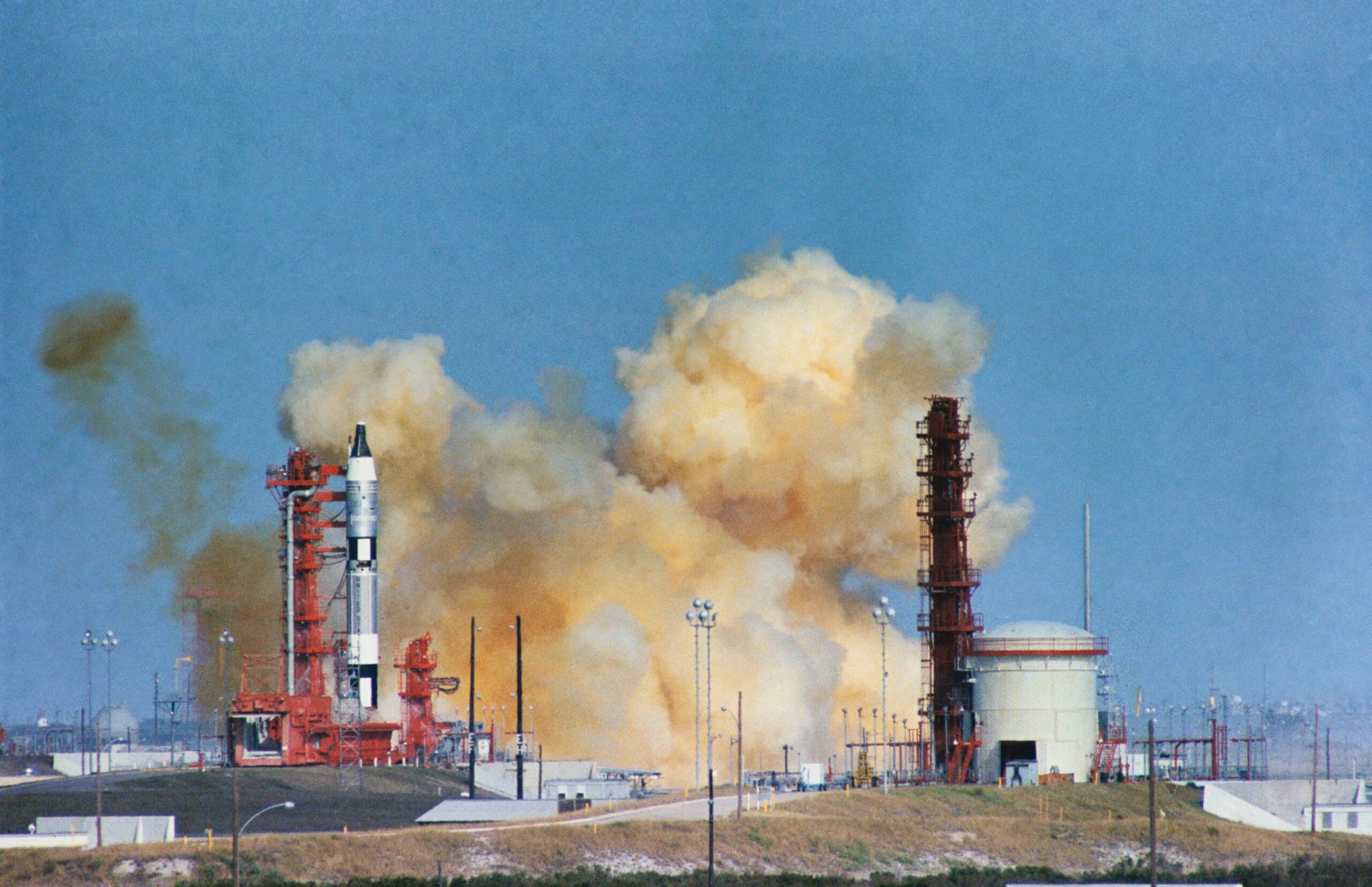

The Saturn V launches are the probably the most iconic launches of the Apollo era, a 363-foot rocket riding on a pillar of flames. But the Gemini launches were, in many ways, far more beautiful. The sleek Titan II missile launched the streamlined spacecraft into orbit on a clear flame. It also made a “bwooping” sound at the moment just before liftoff, a uniquely strange sound.

The US Army’s Redstone rockets that launched Al Shepard and Gus Grissom on the first two suborbital Mercury missions were distant descendants of the Nazi V-2 rocket. As such, it shared a number of similarities with the former offensive weapon, including its use of kerosene (RP-1) as the fuel and liquid oxygen as the oxidizer.
Beginning with John Glenn’s 1962 flight, NASA switched to the Atlas missile as the launch vehicle. These US Air Force-built rockets used the V-2 as a jumping off point but were marked by some signification changes including a thinner skin that demanded the whole structure be pressurized with nitrogen to keep from collapsing under its own weight.
Because the Atlas had its fair share of problems in its early life (it had a 51 percent success rate when Glenn rode one into orbit), the Air Force started working on a backup missile called Titan. Built by the Martin Company, Titan I was the first incarnation that didn’t stray too far from the Atlas. It was a two-stage rocket powered by kerosene and liquid oxygen.
With Titan II came some changes.

The Titan II debuted hypergolic propellants, a kind of fuel and oxidizer combination that ignites on contact. There’s no need for an ignition source to get hypergols burning. They are also storable substances. The liquid oxygen used in the Titan I had to be loaded in just before launch. The Titan II used Aerozine 50, a 1:1 mixture of hydrazine and unsymmetrical dimethylhydrazine as the field and dinitrogen tetroxide as the oxidizer. This was a significant benefit since the Titan II was designed to be stored and launched from an underground missile silo on a moment’s notice.
In the early 1960s, the Titan II was converted into a space launch vehicle by man-rating certain critical systems. This version also used Aerozine 50 as the fuel but made a slight change in oxidizer, opting instead for nitrogen tetroxide. It was this civilian version that launched twelve Gemini missions, ten of which were manned, between 1965 and 1966. And each launch had one feature that made the rocket stand apart from its predecessors: the Titan II made a distinctive “bwooping” sound the second before the rocket lifted off the ground. And the cause was something called a start cartridge.
When a rocket is sitting on the launch pad, the fuel and oxidizer tanks in its first stage, the stage that fires first to get it off the ground, sit on top of the rocket engine. In the case of the Titan II, the oxidizer feeding system used a single duct to connect the tank to the combustion chambers of the two engines while two outlets fed fuel into the combustion chamber at the same time. When they mixed, they ignited, generating thrust to get off the ground.

The fuel and oxidizer didn’t flow into the combustion chamber on their own own. Both needed a little help from turbopumps; two of these drove the propellants to the combustion chambers at the right flow rates and pressures. But those turbopumps also needed a bit of a helping hand from a starter cartridge.
The start cartridge in the Titan II was powered by solid propellant. It produced hot gases that were directed under high pressure to an inlet nozzle, the force of which got the turbine spinning quickly. This turbine drove the fuel and oxidizer pumps that in turn delivered propellants into to the combustion chamber where they ignited on contact, sending the rocket off the Earth.It burned for just one second, but it was enough to get the fuel and oxidizer flowing. Once the rocket got flying, the exhaust gases were directed such that they drove the turbo pump assembly to keep the fuel and oxidizer flowing.
The use of a start cartridge wasn’t limited to rockets using hypergols. The Saturn V, which used kerosene and liquid oxygen, also used a start cartridge to get the fuel and oxidizer flowing into the combustion chamber of the first stage F-1 engines. But only in the Titan II did the start cartridge make a distinctive “bwooping” sound when the start cartridge fired.
Source: techbastard.com; Apollo Lunar Surface Journal; “Titan II: A History of a Cold War Missile Program” by David K. Stumpf.
